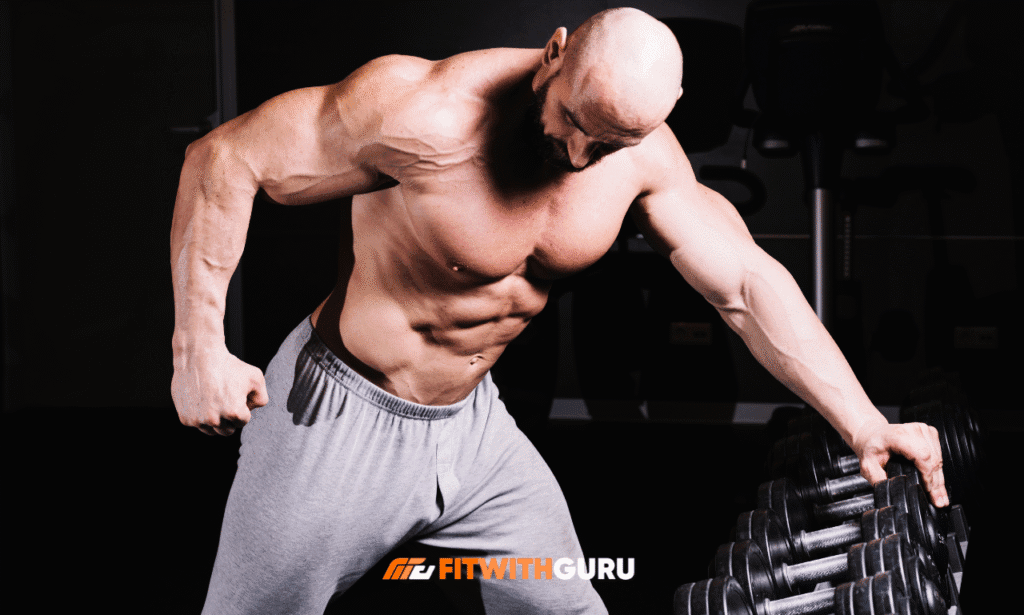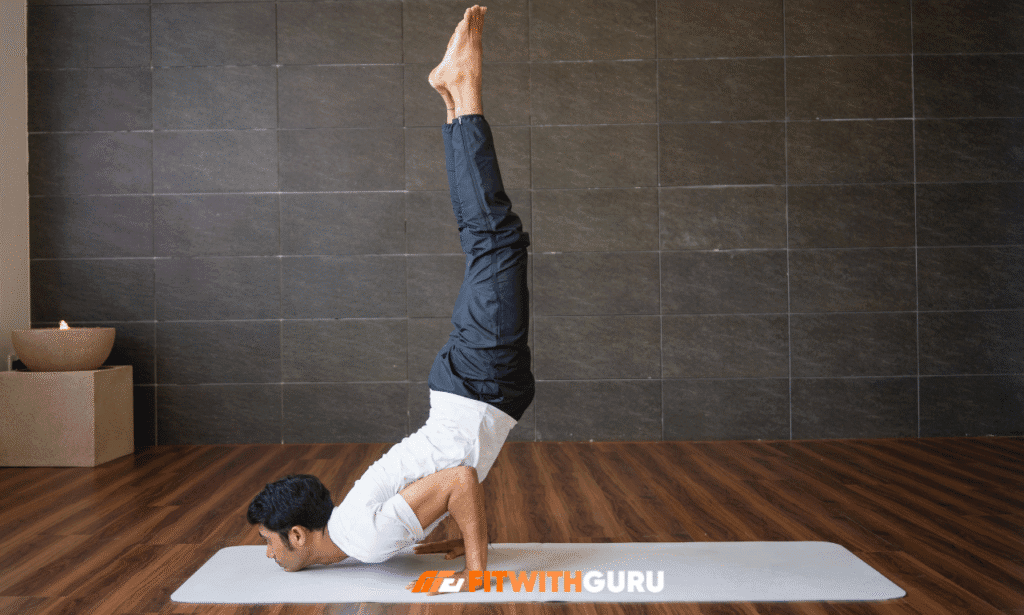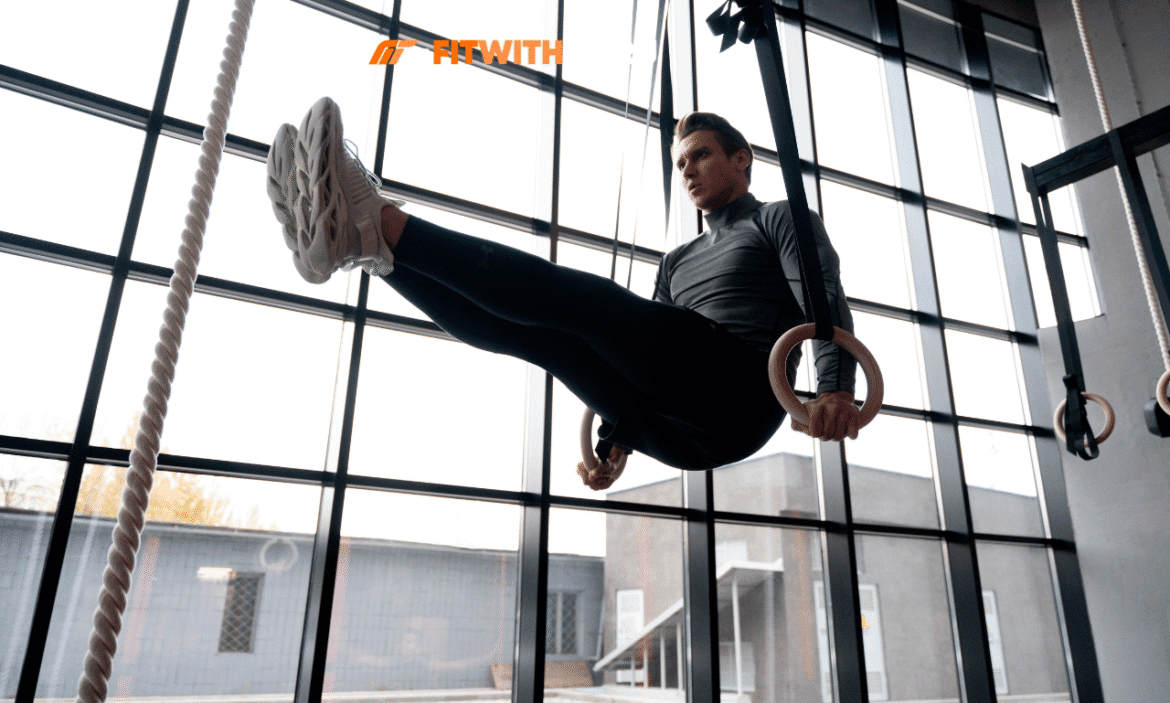An advanced calisthenics workout transforms your body using nothing but your own weight, challenging every muscle group while building functional strength that translates to real-world performance. These workouts represent the pinnacle of bodyweight training, where athletes perform gravity-defying movements that seem impossible to beginners.
The beauty of advanced calisthenics lies in its accessibility—you don’t need expensive equipment or gym memberships to achieve superhuman strength. Your living room, backyard, or local park becomes your training ground for developing muscle, power, and control that rivals any gym-built physique.
What Makes a Calisthenics Workout “Advanced”?
Advanced calisthenics exercises demand exceptional body control, strength-to-weight ratios, and neuromuscular coordination that takes years to develop. Unlike basic push-ups or squats, advanced movements require you to manipulate your entire body through complex ranges of motion while maintaining perfect form.
The progression from intermediate to advanced calisthenics represents a quantum leap in difficulty, where adding a single repetition becomes a months-long goal.
Advanced practitioners can perform movements like one-arm pull-ups, planche variations, front levers, and human flags—exercises that defy conventional strength training wisdom. These movements engage multiple muscle groups simultaneously, creating functional strength that improves athletic performance across all physical activities.
The challenge intensity increases exponentially because you’re working with leverage disadvantages and requiring muscles to stabilize your body in positions that feel unnatural at first.
Benefits of Advanced Calisthenics Workout at Home
Training advanced calisthenics at home eliminates the most common excuse for skipping workouts—you literally have no barrier between you and your training session. Your home environment becomes perfectly customized to your needs, whether you install a pull-up bar in a doorway or use chairs for dip variations.
The financial savings compound dramatically over time when you consider gym memberships, transportation costs, and time spent commuting to training facilities. Home training develops incredible discipline because you must motivate yourself without the external accountability of trainers or workout partners.
Your body adapts to training in your actual living environment, making you functionally stronger in the spaces where you spend most of your time. The privacy of home workouts allows you to attempt challenging movements without self-consciousness, enabling faster skill acquisition through uninhibited practice.
Advanced calisthenics builds proportional muscle development because every exercise requires full-body tension and coordination rather than isolated muscle activation. Recovery improves when you can train multiple times daily with shorter sessions, strategically spacing out skill work and strength training throughout your day.
The 5 Essential Advanced Calisthenics Exercises
1. Muscle-Up Progression
The muscle-up combines pulling and pushing strength into one explosive movement that transitions you from below a bar to above it. This exercise develops phenomenal upper body power, engaging your lats, chest, shoulders, triceps, and core in one fluid motion.
Start by mastering high pull-ups where your chest touches the bar, building the pulling strength necessary for the transition phase. Practice false-grip pull-ups to familiarize your hands with the grip position that enables smooth transitions over the bar.
The explosive pull phase requires you to lean back slightly and drive your elbows down and back, creating momentum that carries you upward. As you rise above the bar, shift your weight forward aggressively while simultaneously pressing down, transitioning from pull to dip position.
Many athletes get stuck at the transition point because they lack the specific strength pattern required for this unique movement phase. Perform negative muscle-ups by jumping to the top position and slowly lowering yourself through the entire range of motion.
Band-assisted muscle-ups provide the perfect middle ground, offering just enough support to complete proper repetitions while building strength. Aim for 5-8 clean muscle-ups per set when you’ve mastered the movement, focusing on controlled form rather than maximum repetitions.

2. Pistol Squats
Pistol squats represent the ultimate test of single-leg strength, balance, and mobility, requiring you to descend on one leg while keeping the other extended. This advanced calisthenics exercise eliminates strength imbalances between legs while building crushing quad, glute, and hamstring development.
Begin by holding a counterweight in front of you, using the external load to balance your body as you learn the movement pattern. Practice box pistol squats by sitting back onto a low surface, eliminating the most challenging bottom position until your strength improves.
The non-working leg must remain completely straight and elevated throughout the movement, adding a significant flexibility and core strength requirement. Keep your working foot flat on the ground with your knee tracking over your toes, preventing the common mistake of letting your knee collapse inward.
Your torso will naturally lean forward to counterbalance your extended leg, but maintain a neutral spine throughout the entire range of motion. The bottom position demands exceptional ankle mobility—many athletes cannot achieve proper depth without months of dedicated flexibility work.
Drive through your entire foot as you stand, focusing on pressing through your heel while maintaining balance and control. Perform 8-12 repetitions per leg for strength development, or increase volume to 15-20 reps for muscular endurance adaptations.
3. Pseudo Planche Push-Ups
Pseudo planche push-ups build the straight-arm strength foundation necessary for achieving full planche holds, one of calisthenics’ most impressive skills. This movement shifts your center of gravity forward dramatically, placing intense stress on your shoulders, chest, and core while your arms remain nearly straight.
Position your hands beside your hips rather than under your shoulders, creating the forward lean that characterizes planche training. Protract your shoulder blades strongly—push them apart and around your ribcage—to protect your shoulders and engage the correct muscle patterns.
Your body must remain hollow throughout the movement, with your pelvis posteriorly tilted and your core compressed to prevent your hips from sagging. Lower yourself slowly while maintaining the forward lean, feeling intense tension through your anterior shoulders and upper chest.
The degree of forward lean determines difficulty—start conservatively with hands near your lower ribs before progressing toward hip-level positioning. Many athletes experience wrist discomfort from the extreme extension required, making wrist conditioning and warm-ups absolutely essential.
Parallettes or push-up handles reduce wrist strain significantly, allowing you to train planche progressions without joint pain limiting your sessions. Complete 6-10 repetitions for 3-4 sets, prioritizing perfect form over repetition count to build correct movement patterns.
4. Front Lever Progressions
The front lever creates a horizontal body position while hanging from a bar, demanding extraordinary core, back, and shoulder strength. This exercise develops your posterior chain like no other bodyweight movement, particularly targeting your lats, lower traps, and entire abdominal wall.
Begin with tuck front levers by pulling your knees to your chest while rotating your hips up until your back becomes parallel to the ground. Progress to advanced tuck levers by extending your hips while keeping your knees bent, increasing the lever arm and resistance significantly.
The one-leg front lever represents an intermediate progression where one leg remains tucked while the other extends fully. Straddle front levers distribute your leg mass laterally rather than linearly, providing an easier progression than full front levers.
Your body must remain completely rigid throughout all progressions, with active shoulder depression preventing your body from sagging or rotating. Pull down and back on the bar while simultaneously pushing your feet toward the ceiling, creating tension that locks your body into position.
Hold each progression for 10-30 seconds depending on your strength level, focusing on perfect alignment rather than maximum hold duration. Advanced practitioners can perform front lever pulls and raises, adding dynamic movement to the static hold for extreme strength development.
5. L-Sit to Handstand Press
The L-sit to handstand press combines compression strength, shoulder power, and balance into one of calisthenics’ most challenging transitions. This movement starts in an L-sit position and requires pressing your body inverted until you reach a handstand, testing your entire anterior chain.
Develop exceptional L-sit strength first, holding the position for 30+ seconds before attempting to add the pressing element. Your hands should be positioned shoulder-width apart with fingers spread wide, creating maximum contact area for balance and power transfer.
Lean forward dramatically as you begin the press, shifting your shoulders far beyond your hands to create the angle necessary for elevation. Compress your body aggressively by pulling your legs toward your torso while maintaining straight knees—this compression creates the mechanical advantage for pressing.
Pike your hips upward as you press, transitioning from L-sit to a tucked position before finally extending into a full handstand. The straddle press variation spreads your legs wide during the press, reducing the compression strength requirement while increasing balance difficulty.
Most athletes require months or years to develop the specific strength and technique necessary for clean press handstands. Practice handstand holds against a wall separately, building the balance and shoulder strength necessary for the final position.

Creating Your Advanced Calisthenics Workout Plan
A comprehensive advanced calisthenics workout plan balances pushing, pulling, legs, and core movements while allowing adequate recovery between sessions. Structure your training week around movement patterns rather than muscle groups, ensuring you develop balanced strength across all planes of motion.
Sample Weekly Split:
| Day | Focus | Key Exercises |
| Monday | Push & Core | Pseudo Planche Push-ups, L-sit Progressions, Handstand Practice |
| Tuesday | Pull & Legs | Muscle-ups, Front Lever Holds, Pistol Squats |
| Wednesday | Active Recovery | Mobility Work, Light Skill Practice |
| Thursday | Push & Legs | Handstand Press Work, Pistol Squats, Dips Variations |
| Friday | Pull & Core | Weighted Pull-ups, Front Lever Pulls, Hanging Leg Raises |
| Saturday | Full Body Skills | Movement Flow, Combination Skills |
| Sunday | Rest | Complete Recovery |
Begin each session with a thorough warm-up including wrist mobility, shoulder circles, and light cardio to elevate your heart rate. Practice technical skills when you’re fresh at the beginning of workouts, saving high-volume strength work for later in the session.
Progressive overload in calisthenics comes from improving leverage disadvantages, increasing hold times, or adding controlled repetitions rather than external weight. Deload weeks every 4-6 weeks prevent overtraining by reducing volume by 40-50% while maintaining movement quality and skill practice.
Advanced Calisthenics Workout Routine for Different Goals
Your specific training goals determine how you structure your advanced calisthenics workout routine, whether you’re chasing strength, skills, or muscle growth. For Maximum Strength: Focus on low repetitions (3-6 reps) of the most challenging progressions you can complete with perfect form.
Rest 3-5 minutes between sets to allow complete neurological recovery, enabling maximum force production on every set. Train specific movements frequently—4-6 times weekly—with relatively low volume per session to develop movement patterns without accumulating excessive fatigue.
For Muscle Building: Increase time under tension by performing slower repetitions and adding pause variations to basic movements. Complete 8-15 repetitions per set across 3-5 sets, pushing closer to failure than strength-focused training.
Reduce rest periods to 60-90 seconds between sets, creating metabolic stress that stimulates hypertrophy adaptations. For Skill Acquisition: Practice skills daily in multiple short sessions, taking advantage of greasing the groove methodology for motor learning.
Video record your attempts regularly, analyzing your form to identify technical errors preventing progression. Use easier progressions for higher volumes, building the movement foundation while avoiding the neurological fatigue of maximum attempts.
Common Mistakes in Calisthenics Intermediate Workout No Equipment
Rushing progressions remains the single biggest mistake preventing athletes from achieving advanced calisthenics skills safely and effectively. Each progression level should feel comfortable for 3-5 weeks before advancing, ensuring your tendons and connective tissues adapt alongside your muscles.
Neglecting basic strength maintenance causes regression in fundamental movements, undermining the foundation that supports advanced skills. Poor form compounds over time, creating dysfunctional movement patterns that limit potential and dramatically increase injury risk.
Ignoring mobility work prevents your body from accessing positions required for advanced movements, creating artificial strength ceilings. Training through pain rather than discomfort leads to chronic injuries that can sideline your training for months or permanently damage joints.
Inadequate rest between sessions prevents adaptation, turning productive training stress into destructive overtraining that halts progress completely. Comparing your progress to social media athletes creates unrealistic expectations and psychological stress that undermines consistent training adherence.
Nutrition and Recovery for Advanced Training
Advanced calisthenics workouts demand proper fueling strategies that support intense training while maintaining the optimal strength-to-weight ratio. Protein intake should reach 0.8-1 gram per pound of body weight daily, providing amino acids necessary for muscle repair and adaptation.
Carbohydrate timing around training sessions ensures adequate glycogen stores for high-intensity skill work without carrying excess body fat. Adequate sleep—7-9 hours nightly—provides the recovery window necessary for neurological adaptations and tissue repair.
Hydration affects performance dramatically; even 2% dehydration reduces strength, power, and cognitive function during training sessions. Strategic deloads and complete rest days allow your nervous system to recover from the intense demands of advanced movement patterns.
Active recovery activities like walking, swimming, or yoga promote blood flow without adding significant training stress.
Frequently Asked Questions
How long does it take to master advanced calisthenics exercises?
Mastering advanced calisthenics exercises typically requires 2-4 years of consistent, intelligent training for most athletes starting from intermediate levels. The timeline varies dramatically based on your starting strength, body composition, training consistency, and genetic factors affecting leverages and recovery capacity.
Specific skills like muscle-ups might take 6-12 months, while extremely challenging movements like full planche could require 3-5 years of dedicated practice. Your progress accelerates significantly when you follow structured progressions, maintain proper nutrition, and avoid the common mistake of rushing through prerequisite strength levels.
Can I build significant muscle with advanced calisthenics workout at home?
Advanced calisthenics builds impressive muscle development, particularly in your upper body, core, and legs, though the growth pattern differs from traditional weightlifting. The constant tension and time under tension from advanced movements creates powerful hypertrophy stimuli, especially when you focus on controlled tempos and higher repetition ranges.
Your muscle development will appear more functional and proportional compared to bodybuilding training, with exceptional core development and relative strength. Adding weighted variations once you master bodyweight progressions ensures continued muscle growth as your body adapts to movement patterns.
What equipment do I need for an advanced calisthenics workout routine at home?
A basic pull-up bar represents the minimum essential equipment, providing the foundation for developing pulling strength and learning advanced movements. Parallettes or push-up bars dramatically expand your training options while protecting your wrists during intense pushing exercises and planche progressions.
Resistance bands offer valuable assistance for learning new skills and provide variable resistance for warming up and accessory work. Gymnastics rings elevate your training to the highest level, adding instability that develops extraordinary strength and body control. A yoga mat provides cushioning for floor-based exercises, and furniture like chairs or counters can substitute for dip bars or step-ups.
How many times per week should I train advanced calisthenics exercises?
Training frequency for advanced calisthenics exercises typically ranges from 4-6 sessions weekly, balancing sufficient stimulus with adequate recovery between sessions. Skill-focused training benefits from higher frequency with lower volume, allowing you to practice movement patterns without excessive fatigue.
Strength-building phases might require fewer weekly sessions with higher intensity, giving your nervous system time to recover between maximum efforts. Listening to your body remains crucial—persistent fatigue, decreased performance, or joint pain signals inadequate recovery and the need for additional rest.
Is advanced calisthenics more effective than weight training?
Advanced calisthenics and weight training both build strength effectively, though they develop your body differently and excel in different performance domains. Calisthenics creates superior relative strength, body control, and functional movement patterns that translate exceptionally well to athletic activities and daily life.
Weight training allows more precise progressive overload and typically builds absolute strength and muscle mass faster, particularly in lower body movements. The ideal approach combines both training methodologies, using calisthenics for skill development and body control while adding weights for continued strength progression.
Conclusion
Advanced calisthenics workout training represents the ultimate expression of human strength and body control, achievable entirely within your home environment.
These five exercises—muscle-ups, pistol squats, pseudo planche push-ups, front lever progressions, and L-sit to handstand press—provide a complete foundation for developing extraordinary capabilities.
Success in advanced calisthenics demands patience, consistency, and intelligent programming that respects progression timelines while challenging your limits. Your journey from intermediate to advanced practitioner transforms not just your physical capabilities but your mental resilience, discipline, and understanding of human potential.
The beauty of training at home with no equipment limitations means you can practice these movements daily, integrating skill work into your lifestyle naturally.
Remember that everyone’s timeline differs based on starting point, genetics, and consistency—focus on your personal progress rather than comparing yourself to others.
Advanced calisthenics workout plans succeed when they balance pushing your limits with providing adequate recovery, maintaining the long-term perspective necessary for mastery.

